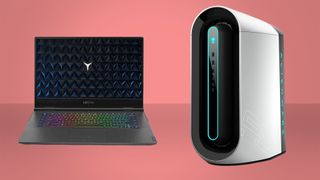Biohybrid robot made with mouse muscles successfully walks, might think and boink later
The walking's thanks to a 3D-printed scaffold controlled by LED lights.

Robots in their current form contribute far more to our modern day life than you may realise. They may not be the sci-fi androids many imagine, but they're hard at work doing tasks like building cars, or learning how to control nuclear fusion. Only in recent years are we starting to see robots like you might have imagined as a kid, with Boston Dynamics' creations doing all sorts of crazy stunts like dancing or guarding Pompeii.
Robotics isn't all about metal machines it turns out, and biohybrid robots may be part of our cyberpunk future too. It's only been a few days since I was introduced to OSCAR, an artist's rendition of a disgustingly meaty, pulsating flesh robot. As wonderful and vivid as those videos are, it's a good time to take a palette cleanser with a look at a real-world biohybrid robot.
Inverse reports a team of researchers has successfully implemented a new design for one such biohybrid bot. The robot uses artificial and living parts in fusion, in this case to walk. Though not quite as quickly or dramatically as we've seen from the all-artificial Boston bots.
This biohybrid uses mouse muscle cells combined with some soft 3D-printed scaffolds and wireless LED chips to do its thing. The LEDs emit light that stimulates the mouse tissue, which in turn moves the scaffolding. The 3D-printed soft material is key here, as it's designed in such a manner to allow these spasms to walk the robot forward at about .83 millimetres per second.

Best gaming PC: the top pre-built machines from the pros
Best gaming laptop: perfect notebooks for mobile gaming
That is some very slow, very creepy mechanical meat movement, though it happens to be the fastest speed ever achieved by a biohybrid robot. It's been able to use and move objects, get through a maze, and can even use swappable tools. Plus, it's all wireless without any onboard power, and looks a lot more palatable than our friend OSCAR.
Biohybrid tech is a recent development compared to traditional robotics, which is why we don't expect it to keep pace with more mechanical builds. It can have potential advantages like reacting intuitively to things harder bots might miss, like heat, lights like those LED chips, or perhaps chemicals. Biohybrids might even reproduce, which while I'm sure is potentially useful is definitely something I'm going to be thinking about silently in terror all day.
Given how new these robots are, there's still plenty of work to be done. Getting these machines to run a bit faster, have more control, and generally just improve is obviously on the cards. Though apparently so is growing neural cells to give them brains for simple tasks. Yep.
The biggest gaming news, reviews and hardware deals
Keep up to date with the most important stories and the best deals, as picked by the PC Gamer team.
If you want to read more about this horrifying idea, make sure to check out the full research paper over on Science Robotics.

Hope’s been writing about games for about a decade, starting out way back when on the Australian Nintendo fan site Vooks.net. Since then, she’s talked far too much about games and tech for publications such as Techlife, Byteside, IGN, and GameSpot. Of course there’s also here at PC Gamer, where she gets to indulge her inner hardware nerd with news and reviews. You can usually find Hope fawning over some art, tech, or likely a wonderful combination of them both and where relevant she’ll share them with you here. When she’s not writing about the amazing creations of others, she’s working on what she hopes will one day be her own. You can find her fictional chill out ambient far future sci-fi radio show/album/listening experience podcast right here. No, she’s not kidding.
Most Popular







